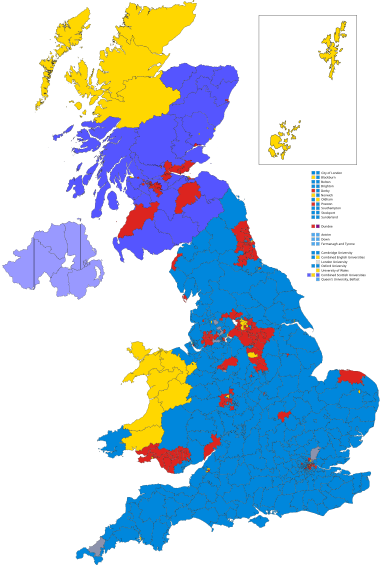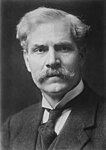
Back যুক্তরাজ্যের সাধারণ নির্বাচন, ১৯২৪ Bengali/Bangla Všeobecné volby ve Spojeném království 1924 Czech Parlamentsvalget i Storbritannien 1924 Danish Britische Unterhauswahl 1924 German Elecciones generales del Reino Unido de 1924 Spanish Élections générales britanniques de 1924 French הבחירות הכלליות בבריטניה 1924 HE Pemilihan umum Britania Raya 1924 ID Elezioni generali nel Regno Unito del 1924 Italian 1924年イギリス総選挙 Japanese
| |||||||||||||||||||||||||||||||||||||||||||||||||
All 615 seats in the House of Commons 308 seats needed for a majority | |||||||||||||||||||||||||||||||||||||||||||||||||
|---|---|---|---|---|---|---|---|---|---|---|---|---|---|---|---|---|---|---|---|---|---|---|---|---|---|---|---|---|---|---|---|---|---|---|---|---|---|---|---|---|---|---|---|---|---|---|---|---|---|
| Turnout | 77.0% ( | ||||||||||||||||||||||||||||||||||||||||||||||||
| |||||||||||||||||||||||||||||||||||||||||||||||||
 | |||||||||||||||||||||||||||||||||||||||||||||||||
 Diagram showing the composition of the House of Commons following the election | |||||||||||||||||||||||||||||||||||||||||||||||||
| |||||||||||||||||||||||||||||||||||||||||||||||||
The 1924 United Kingdom general election was held on Wednesday 29 October 1924, as a result of the defeat of the Labour minority government, led by Prime Minister Ramsay MacDonald, in the House of Commons on a motion of no confidence.[1] It was the third general election to be held in less than two years. Parliament was dissolved on 9 October.[2]
The Conservatives, led by Stanley Baldwin, performed better, in electoral terms, than in the 1923 general election and obtained a large parliamentary majority of 209. Labour, led by MacDonald, lost 40 seats. The election also saw the Liberal Party, led by H. H. Asquith, lose 118 of their 158 seats which helped to polarise British politics between the Labour Party and the Conservative Party.
The Conservative landslide victory and the Labour defeat in this general election have been, in part, attributed to the Zinoviev letter, a forged document that was published as if it were genuine and sensationalised in the Daily Mail four days before the election. The Labour vote increased by around one million in comparison to the 1923 general election, but this was largely due to the party putting up 87 more candidates than it had in the previous election.
The Conservatives had called the previous 1923 election early to get a mandate for moving to a protectionist trade policy of imperial preference, but had lost their majority. In 1924, they reverted to free trade and regained power. They would propose protectionism at the next general election in 1929, again losing.
Along with 1964 and 1992 this is the first of three elections in the 20th Century to take place in the same year as a United States presidential election. This is also the closest instance in which both elections overlapped with the latter’s election taking place a week later.
Cite error: There are <ref group=note> tags on this page, but the references will not show without a {{reflist|group=note}} template (see the help page).
Cite error: There are <ref group=lower-alpha> tags or {{efn}} templates on this page, but the references will not show without a {{reflist|group=lower-alpha}} template or {{notelist}} template (see the help page).
- ^ Graper, Elmer D. (1925). "The British Election". American Political Science Review. 19 (1): 84–96. doi:10.2307/2938896. ISSN 0003-0554. JSTOR 2938896. S2CID 145751193.
- ^ "Parliamentary Election Timetables" (PDF) (3rd ed.). House of Commons Library. 25 March 1997. Retrieved 3 July 2022.


